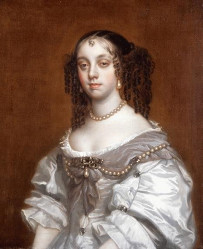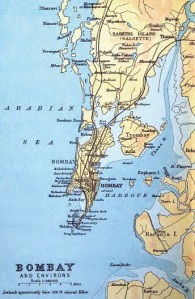Tea – the quintessentially English beverage. But it was not always so. Alex Burd investigates the Portuguese roots behind our national past time.

Catherine of Braganza
It is 375 years since Catherine of Braganza was born in southern Portugal. In 1661, aged 33, she was married to King Charles II of
Britain was not alien to tea before Catherine’s arrival; indeed Samuel Pepys mentions drinking ‘a cupp of tee’ for the first time in 1860. It is thought to have first been brought to London by Dutch traders in 1657, five years before Charles II new consort set foot here. Catherine is held responsible for popularising the drink and starting what is now almost a national obsession. Prior to her arrival tea was drunk mainly for medicinal purposes and was recommended for treating ‘colds and defluxions. It did not come cheap; Laura Martin, author of Tea: The Drink that Changed the World, estimates that a pound of tea would cost £2, well over £500 in today’s money. England in order to cement an alliance between the two maritime nations. As well as her hand in marriage the King received Tangiers, the Seven Islands of Bombay and about £300,000. England received something much more long lasting, drinking tea.
Tea drinking was popular amongst Portuguese nobility, and also in Holland where Charles had grown up. The story goes that upon arriving in Portsmouth for the first time after a particularly stormy crossing, Catherine sought a drink to calm her nerves and stomach – tea. Given its rarity at the time in England there was none available and she was brought ale instead. Following this early experience of English cuisine Catherine preferred to stick to her native diet, including tea. As her eminence rose in the Royal Court Catherine became something of a trend setter and English high society began following her lead in taking high tea at 4pm. Just as it was in her home country tea soon became a fixture for the English elite. Its exotic origins, relative rarity and high cost only increased the drink’s appeal as a status symbol.
In the early years tea remained the drink of choice for the very wealthy and it was far from the national staple that it is today. That was soon to change, and again it was down to Catherine. As previously mentioned, Catherine’s dowry included territory in Bombay (what is now Mumbai), this gave British traders a stronger foothold in India as well as a base of operations nearer China – the two major tea producing nations. It was rented to the East India Trading Company for a paltry fee and greatly improved the British access to tea and became pivotal in the global tea trade. By 1766 Britain had become the biggest importer of tea from China, transporting 1.5 million pounds more than Holland in second place.
The growing supply of tea lead to the drink spreading further through British society which lead to French historian, Fernand Braudel, to suggest that tea had successfully replaced gin as the national drink of choice. The drink is now taken for granted in Britain and 1.9kg is consumed per person person every year on average, making the UK the 13th largest tea consumer per capita in the world. The infatuation began with the arrival of a Portuguese princess, Catherine of Braganza. Two years ago, her role was commemorated with a statue in Lambeth, making her the first person of Portuguese origin to be celebrated in such a way in the UK. Her importance was first recognised much earlier, Edmund Waller wrote this poem to celebrate Catherine’s 25th birthday:
Tea both excels, which she vouchsafes to praise.
The best of Queens, the best of herbs, we owe
To that bold nation which the way did show
To the fair region where the sun doth rise,
Whose rich productions we so justly prize.

